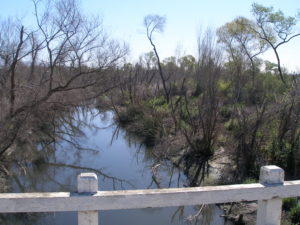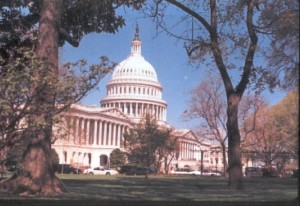
The polyphagous (PSHB) and Kuroshio (KSHB) shot hole borers are causing havoc in riparian and planted landscapes in four counties in southern California and are spreading north. (For current information go here or here .
As I described in a blog last July, the two insects are known to attack hundreds of tree species; at least 40 are reproductive hosts. Trees known to support PSHB include box elder, big leaf maple, California sycamore, willows, cottonwoods, and several California oaks. The insect-fungi combinations threaten more than a third of trees in the urban forests in southern California, with a cost for the trees’ removal and replacement estimated at $36 billion. Costs and hosts are discussed more fully in the July blog linked to above.
The High Cost of Management
Already, UC Irvine has spent close to $2 million to manage trees on campus that have been attacked.
Orange County has both polyphygous and Kuroshio shot hole borers. One agency – Orange County parks – has spent $1.7 million on shot hole borer surveys, tree inventory, public outreach materials, staff training, and some research. The parks agency is trying to engage other county agencies, such as Public Works and Waste & Recycling to get their help. For example, Public Works is putting together a tree ordinance with enforceable provisions.
While scientists have not yet published their analysis of the vulnerability of forest areas in other parts of the country, we do know that some reproductive hosts are widespread across the country — box elder, sweet gum, Japanese wisteria, and tree of heaven. Less is known about the hosts for Kuroshio shot hole borer. For a full list of known hosts, visit the two sources linked to in the first paragraph.
How Agencies Should Respond to this Threat
The shot hole borers and associated fungi clearly represent serious threats to urban, rural, and wildland forests across California and probably much of the rest of the country. Clearly it is important that we:
- Increase our understanding of these insects and their associated fungi – including their possible geographic and host ranges;
- Use this evolving understanding to develop detection tools; and
- Use this evolving understanding to develop methods to slow their spread or to protect trees.
So what is being done? Individuals – academics; staff of local, state, and federal agencies; and concerned conservationists – are working hard. But they get little support from state or federal phytosanitary agencies.
The Need for New State and Federal Regulations
I have written earlier about the refusal of California Department of Food and Agriculture to either designate the polyphagous and Kuroshio shot hole borers as quarantine pests [] or to regulate movement of firewood – one of the major pathways for spread of the insects.
Nor has USDA APHIS designated the insects and their fungi as quarantine pests. The apparent explanation for the agency’s inaction is the considerable taxonomic confusion about the beetles and the possibility that the insects are already established elsewhere in the U.S. In addition, since the two shot hole borers are currently known only from California, APHIS is unlikely to take action unless California does. However, there is no legal requirement that APHIS defer to the state on this matter.
The Results of Funding and Regulatory Shortfalls
Both CDFA and APHIS are providing some funds to support research and development. Research on detection, spread, and possible biocontrols — for the insects or fungi — have received a total of $385,000 in FY16 and $419,549 in FY17 from a grant program operated under the USDA Plant Pest and Disease Management and Disaster Prevention Program (Farm Bill Sec. 10007). Still, the principal investigators and affected county, state, and federal agencies are scrambling to fill funding gaps – projects that will improve our understanding and put forward practical advice.
The San Diego Association of Governments (SANDAG) and Natural Communities Coalition (NCC) of Orange County are supporting research by Akif Eskalen and Shannon Lynch of UC Riverside on both (a) biocontrol using endophytes naturally occurring in various host tree species and (b) models to predict the disease’ behavior in native vegetation. Dr. Eskalen and Dr. John Kabashima of Orange County Cooperative Extension are seeking funds to support additional work on outreach and extension for advisors, land managers, master gardeners and homeowners.
Santa Barbara County officials – where at least one of the shot hole borer species was recently detected – are struggling to fund an expanded trap program to detect the insects. The CDFA does have traps deployed but UC Santa Barbara is considering launching a trapping program in riparian areas (where many of the host trees play especially important ecological roles). Officials are still not certain which species of insect is present (they think it is KSHB) and whether the beetles are carrying the typical fungal complex or something novel.
In the past, some of the work on the shot hole borers has been funded by associations of avocado growers. However, it is now clear that the beetle attacks only avocado tree branches, so it does not kill the tree. No longer facing a dire threat to their industry, the avocado commission is no longer funding research work on this pest-disease complex.
The experts – Dr. Eskalen for the fungi and his colleague Dr. Richard Stouthamer for the insects – have no funds to process samples sent to their laboratories for the confirmation of the beetles and fungi. They might soon have to charge fees for each sample – thereby discouraging collections that track each species’ spread and find new introductions.
In the absence of CDFA designation of the shot hole borers as regulated pests, neither state nor county agencies have a firm foundation on which to base regulations to curtail movement of firewood, green waste, or other pathways by which these pests can be spread to new areas.
Conservation Agencies are Cobbling Together Responses As Best They Can
Southern California staff of the California Department of Fish and Wildlife agency, responding to the damage caused by the Kuroshio shot hole borer in the Tijuana River estuary (described here and here), have formed a coalition to develop strategies for natural resource and urban forestry settings and ensure coordination. Natural resource agencies have access to some funding sources, such as Natural Communities Coalition (NCC) grants and funding for management of invasive species in protected habitats.
Southern California staff of the U.S. Fish and Wildlife Service are seeking grants from internal agency sources – citing the threat to riparian-dependent wildlife, especially the endangered Least Bell’s vireo.
Santa Monica National Recreation Area and the three National forests in the vicinity – the Angeles, Cleveland, and San Bernardino National forests – have taken actions that should help prevent the shot hole borers’ introduction via firewood. Santa Monica Recreation Area does not allow wood fires, only charcoal (this action probably is in response to the high fire danger in the area rather than the pests specifically). The National forests’ webpages on camping include a graphic with the statements “Buy It Where You Burn It” and “Be aware that firewood can harbor insects and diseases; transporting it can move these pests to new locations.” (See my earlier blog about firewood alerts on National forests, parks, etc. here).
What You Can Do
Many Californians are pushing for action … they need our help! If you live in California, contact your state legislators. If you live elsewhere, your forests are also at risk from California’s failure to act. So, if you know someone who lives there, ask that person to contact his/her legislators. Ask the legislators to (a) demand state designation of PSHB, KSHB, and GSOB as quarantine pests and adoption of state firewood regulations and (b) support funding for these programs.
The U.S. Congress has a role in convincing APHIS to play a bigger role. Contact your federal Senators and Member of Congress and urge them to ask USDA APHIS to regulate movement of firewood, green waste, and nursery stock from areas infested by the polyphagous or Kuroshio shot hole borers and goldspotted oak borer.
President Trump will soon propose funding levels for government programs, including APHIS’ “tree and wood pest” program. Please keep informed about these proposals – and contact your Congressional representative to express support for adequate funding. Contact me using the “Contact us” button on our website if you wish to receive informative alerts about the upcoming appropriations process.
Posted by Faith Campbell
We welcome comments that supplement or correct factual information, suggest new approaches, or promote thoughtful consideration. We post comments that disagree with us — but not those we judge to be not civil or inflammatory.
